We may receive a commission when you use our affiliate links. However, this does not impact our recommendations.
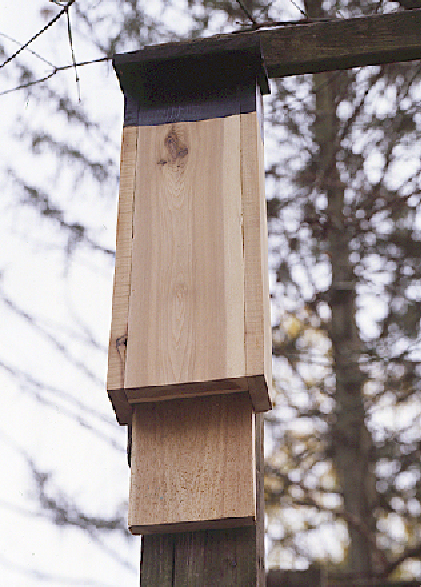 Readers of my personal blog know that I’ve run into some unexpected challenges with my little house rehab project: knob-and-tube wiring…and bats. The wiring is now about 80-percent new (the other 20 percent will be done later this year or next), but I have to wait for the bats to wake up from their winter naps before kicking them out (which is done by sealing up all but one likely ingress/egress point, and installing a one-way door there).
Readers of my personal blog know that I’ve run into some unexpected challenges with my little house rehab project: knob-and-tube wiring…and bats. The wiring is now about 80-percent new (the other 20 percent will be done later this year or next), but I have to wait for the bats to wake up from their winter naps before kicking them out (which is done by sealing up all but one likely ingress/egress point, and installing a one-way door there).
Bats, however, are beneficial to have around…I just don’t want them inside (though the cats seem to think the bats are awfully good fun). So, I’m going to build a couple bat houses and install them in my yard, in hopes of enticing a few bats to remain in my immediate exterior environs.
Actually, one of the first projects I built for Popular Woodworking was a simple bat house for the book “Birdhouses You Can Build in a Day” (2004). The book editor at the time asked for volunteers within the company, and I raised my hand. (At the time, I was writing the marketing stuff for PWM and several other communities). But darn if I didn’t give away that bat house.
Anyway, below is that article, plus a PDF of a larger bat house design we ran in the magazine in 1999.
Bat House
I used cedar for this project. The rough sides are perfect for the inside of the house, giving the bats a surface from which to hang and sleep. You can make a bat house with one, two or more approximately 1″-deep sections. This house, which has only one section, holds 50 to 75 bats!
Bats like to be very warm [Then WHY are they in my house, which I don’t heat to more than 60° in the winter?!] so paint the house black or cover it with roofing tar paper. Attach the house 10′ to 30′ high to the sunny side of a barn or garage underneath the edge of the roof.
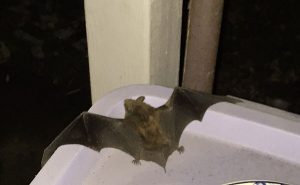
This is not the picture we ran in the book. This is the bat I evicted from my living room last week. (It likely flew right back in.)
Little Brown Bat
The little brown bat is one of the most common bats in the United States and Canada. They prefer to live in areas along streams and lakes, and form nursery colonies in buildings or artificial bat houses in the summer. They hibernate in the winter in caves and mines [and old houses], waking once every two weeks to fly about, but not to feed [and they usually do this at three in the morning or so, and dive-bomb the bed…]. It stores about 2 grams of fat on its body as winter sustenance.
Little brown bats forage over water, where their diet consists of aquatic insects. During peak feeding activity, one bat can catch up to 1,200 insects.
Warning: Bats are susceptible to rabies. Rabid bats rarely attack humans or other animals, but bats found lying on the ground may be rabid. Never touch or pick up any bat. Report it immediately to animal-control officers. [Yeah, right. Pull up your big girl (or big boy) panties, put on some thick leather gloves and take care of it.]
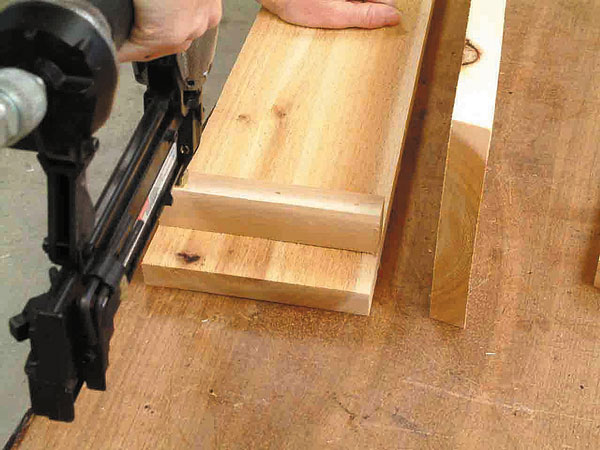
Cut the parts according to the cutting list (below). Nail the spacer to the back. Remember to keep the rough-sawn face of the cedar to the inside of the house.
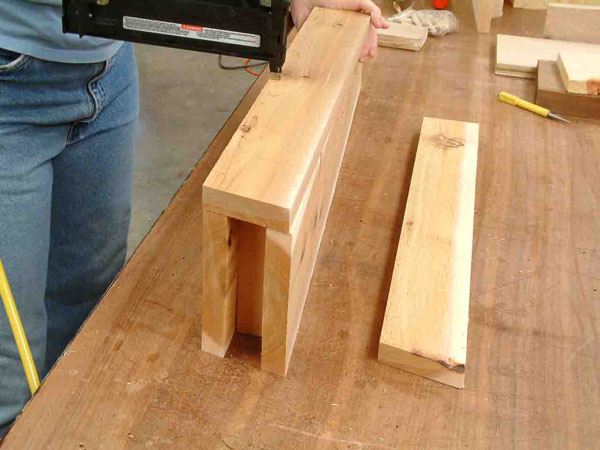
Nail the bottom cap to the inside bottom of the front part. Then nail the front to the spacer/back assembly. Nail the sides to the front/back.
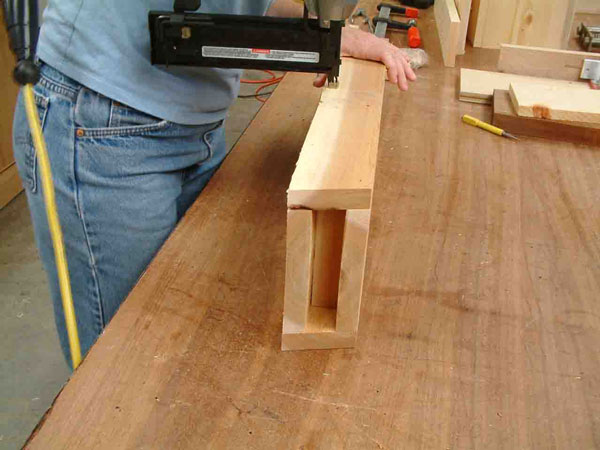
After nailing the sides in place, nail the roof to the house. Cedar stands up to the elements and insects well, so no finish is needed.
And here’s the PDF for the fancier one…with enough room for a maternal colony (I do not think I want that many bats to remain).
Here are some supplies and tools we find essential in our everyday work around the shop. We may receive a commission from sales referred by our links; however, we have carefully selected these products for their usefulness and quality.



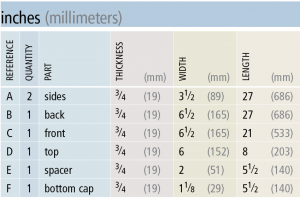
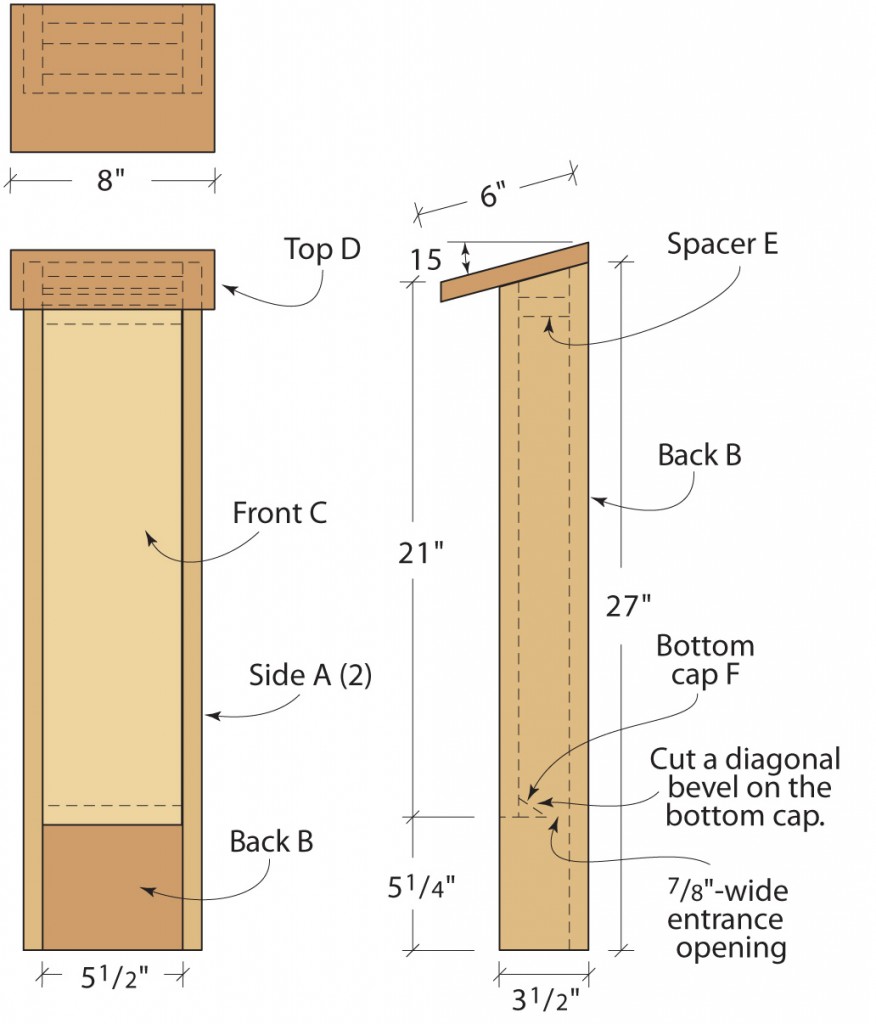






We have the same problem with bats, and a cat that could care less, too much trouble.
Buy your self a short handled landing net (fishing) and keep it close at hand, when they appear–net them –take them outside and release.
Our house has be sealed, but there are several others in the area that have not plus a 150 year old barn.
p
I’ve found the biggest problem with knob and tube wiring (if the insulation hasn’t disintegrated) is that during the original wiring the device was often installed first, the wire was pulled taut, and then it was spliced, leaving just a few inches of wire in the box (which is usually a shallow box). It’s just a wiring nightmare trying to splice on pigtails, or remove the original wall-case, or trying to fish a new line through a plaster and lathe wall (everybody whose done this knows that all of the excess plaster has settled and cured at the bottom the stud bay and is now a virtual road block.)
I honestly feel for you